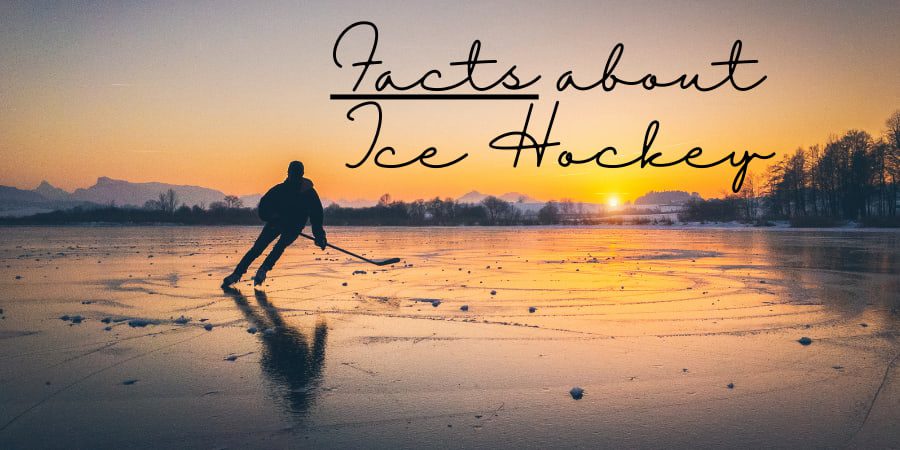What is an embellishment penalty in Ice Hockey? Ah, the world of Ice Hockey embellishments, a place where dramatic falls and exaggerated winces reign supreme! This article examines the on-ice drama and artistry behind embellishment and the consequence of faking a dive. We will discuss how the league has attempted to tamper with these theatrics all in an attempt to pull a penalty and save the reputation of the game as a whole.
If you’re a newbie to the hockey parent clan, strap in, and let me guide you through this icy drama. After a decade in these bleachers, I’ve seen more dives than a summer at the swimming pool in both youth and professional ice hockey!
Whether you’re a hockey parent, a fan, or a curious newcomer, learn what makes an embellishment penalty in hockey both a strategic play and a spectator’s delight.

Okay hockey parents, have you ever found yourselves on the edge of those chilly arena seats, watching young players take a tumble, and wondering if they’ve taken acting lessons on the side? Welcome to the world of embellishment and diving in youth and professional ice hockey! ?✨
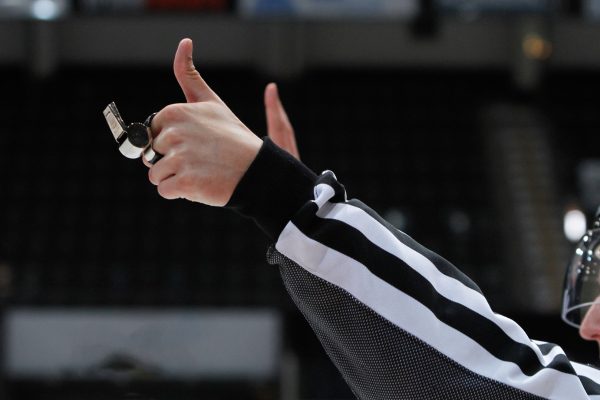
Picture this: the rink is alive with anticipation, fans are stamping their frozen feet, and players are gliding across the ice like figure skaters gone rogue. Suddenly, WHAM! A player is down! But wait, did he really get tripped, or did he just perform the most dramatic flop since your toddler didn’t get their favorite cereal? Laughter erupts from the crowd as the opposing player flails like a penguin in a tuxedo, trying to draw a penalty call. Ah, the good ol’ embellishment!
In youth leagues, it’s even more comical. Some think it’s funny, and it’s an endless source of entertainment for parents like us.
Why Embellishments are Unsportsmanlike
While embellishments in ice hockey might stir up a chuckle or two from those with a taste for theatrics, it’s important to recognize that not everyone finds these exaggerated falls or hits amusing. Some parents and fans view embellishments as a distortion of the game’s integrity, feeling that it undermines the hard work, discipline, and true skill that players should exhibit. For these passionate advocates of the sport, embellishments are more than just cheeky play; they’re a serious grievance, a slap in the face to the love and respect they have for the ice and the game itself.
These over-the-top performances by certain hockey players are often seen as unsportsmanlike conduct because they attempt to manipulate the game’s natural flow, seeking unfair advantage, and turning the sports arena into a drama stage, rather than a showcase for genuine skill and fair competition. ??.
Trying to draw a penalty on the other team with a bit of, shall we say, artistic flair. But here’s where it gets spicy ?️: Is it a real reaction, or just a good ol’ hockey dive? Cue the debate and controversy! Some folks are all, “That was a real hit!” while others are like, “Nah, that’s just some top-notch acting right there!” It’s a slippery slope, but one thing’s for sure.
The Art of Embellishment
Embellishment in ice hockey is a lot like adding glitter to your favorite arts and crafts project. Only here, it’s a player adding a dash of drama to a situation to make it look worse than it really is. Think of it as diving calls in soccer but on skates! Some players have mastered the art of diving, flopping, or just plain acting to draw a penalty against the other team. And hey, it might earn your team a power play, but be warned, referees are wise to these antics. ??
What It Looks Like:
Picture a player barely touched, yet soaring through the air like an eagle struck by lightning. That’s embellishment, my friends, and it’s a skill some have honed to perfection (a.k.a. the diving penalty)
So newcomers, whether you’re watching from the stands or lacing up those skates, knowing what a game misconduct penalty will add a whole new layer to your enjoyment of the game. Remember, it’s not just about the goals and the saves; sometimes, the best show is happening right in the middle of the action.
Soccer vs. Ice Hockey:
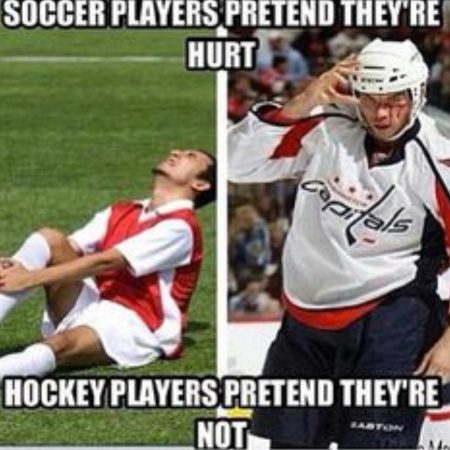
Have you ever found yourself watching a soccer match and wondering, “What’s with all the dramatic tumbles?” You’re not alone! I’ve been down that rabbit hole too. Let’s discuss the spectacular world of embellishments in both soccer and NHL Ice Hockey.
Soccer Embellishments: The Ballet on Grass
Ah, soccer. The beautiful game, they call it. Players gracefully glide across the pitch, and then – BAM! – a gust of wind from an opposing player sends one tumbling. Okay, maybe not quite a gust of wind, but soccer embellishments can be quite the spectacle.
Now, I don’t know about you, but some of those falls? Oscar-worthy! If they handed out trophies for the most dramatic collapse, we’d have some multi-talented athletes in our midst.
Embellishments in Soccer: Drama on the Green
Soccer’s embellishments are like the soap operas of the sporting world. With a dramatic collapse and a heart-wrenching clutch of a limb, a player might attempt to draw a foul from the referee. They’ve mastered the art of the fall, turning a gentle brush into a foul that looks as though it came from a medieval jousting tournament.
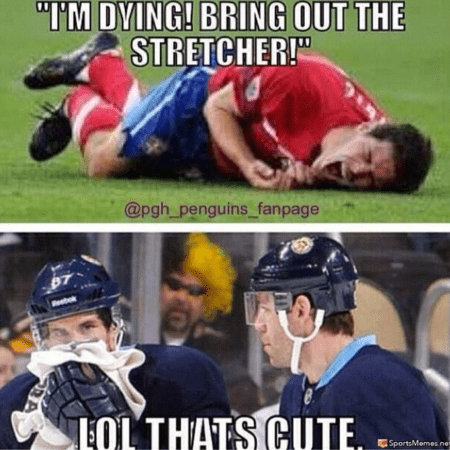
But jokes aside, it’s all part of the game’s strategy. Win a penalty, grab a free kick, or just disrupt the flow of play. Just watch out for that yellow card if the referee isn’t buying what you’re selling!
Embellishments in Ice Hockey
Now, let’s skate over to ice hockey, where embellishments are performed on a slippery stage of ice. These theatrical tumbles are less about grace and more about the slapstick comedy of a vaudeville act.
NHL Ice Hockey Embellishments: Enough is Enough
Now, let’s skate onto NHL Ice Hockey. The embellishments here? Think more slapstick comedy than Broadway drama.
Imagine trying to perform a dive on ice. Sounds slippery, right? Trust me, it is! A slight nudge and WHOOSH! There goes a player sliding – sometimes in very odd areas on and off the ice. And the crowd? We’re laughing, we’re cheering, and we’re facepalming in shame if we were the guilty side of the embellishment.
When the NHL referees get it right, you might see the opposing player cool his heels in the penalty box for at least a two-minute penalty. Get it wrong, and the embellishment fools the referee, or it is just missed by the human eye, it might result in a power play against your team, and your player is serving two minutes. Cover your ears, the fans will be yelling at both the NHL official and the offending player for the spectacle caused.
The Integrity of the Game – NHL Attempts to Eliminate Embellishments
Oh, those embellishments and player dives in NHL Ice Hockey? Let’s be real; they can sometimes tarnish the pure, adrenaline-pumping essence of the sport. The NHL’s been working hard to separate itself from the dramatic dives we might see in soccer by enforcing rules that promote fair play and sportsmanship. So, next time you see a player take a tumble, remember, we’re here for the skills, the goals, and the love of the game, not the ice capades! ?❤️
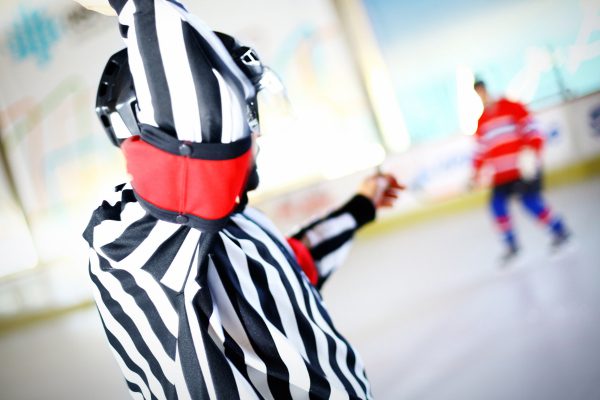
In an attempt to control the diving and embellishments, the NHL changed the NHL Rulebook. The league in the 1998-1999 season put on its serious face and decided to address that ever-entertaining but slightly pesky habit of diving. They whipped out the rule book and scribbled in a new provision, slapped a minor penalty for unsportsmanlike conduct on anyone caught attempting to draw a penalty through diving. They broke it out from the crowd of ‘unsportsmanlike conduct’ and gave it a grand title: the “Diving” penalty.
Typical Ice Hockey Embellishment Penalties
High Sticking:
In a typical hockey game, high sticking, or the action of a player swinging their stick above the shoulder level, often results in a high-sticking penalty. This penalty is usually assessed to an attacking player who might have incidental contact with an opponent while in possession of the puck.
The assessment of a minor penalty for high sticking can lead to a stoppage of play. If the penalized player argues or if the referee needs more time to evaluate, the attention of the referee is fully given to determine the right call. Sometimes, if it’s determined that the contact was truly incidental, the player might be given the benefit of the doubt.
On the other hand, if both teams have penalized players at the same time, they might receive coincidental minors, which won’t affect the number of players on the ice.
A power play occurs when one team has more players on the ice due to a penalty assessed to the other team. During this time, the penalized team is on the penalty kill, working hard to prevent the other team from scoring.

Sometimes, if a player commits a particularly egregious high stick that causes injury, they might be assessed a double minor penalty. This means that the penalized player’s team must endure two consecutive penalty kills, making the game’s dynamics shift significantly.
All these rules, from possession of the puck to the action of the players, contribute to the thrilling ups and downs that make every hockey game a unique and exciting spectacle. Whether it’s the tension of a power play or the drama of a high-sticking penalty, these terms and rules are at the heart of what makes hockey a beloved sport for fans everywhere! ??
Tripping:
In the fast-paced world of hockey, player safety is paramount, and a tripping penalty is taken very seriously. An ice penalty like tripping can create dangerous game situations, especially if a player is deemed a chronic embellisher, exaggerating falls to manipulate the outcome. If a team official identifies an initial infraction as a first offense, the subject of the penalty might receive a warning, while subsequent violations may lead to supplementary discipline. Although gaining a man advantage through embellishment may seem tempting, it’s a rare occurrence that referees miss these actions, keeping the integrity of the game intact.
On the other hand, if a tripping penalty is called in a more severe context, where a clear goal-scoring opportunity is denied, a penalty shot might be awarded. This action ensures that the attacking team does not lose a genuine opportunity due to the illegal actions of an opposing player. As each game situation unfolds, referees are continually evaluating the behavior of players on the ice, ensuring that the rules are adhered to and that the game is played fairly. This rigorous observation ensures that embellishments are spotted and appropriately penalized, emphasizing that genuine skill, strategy, and sportsmanship are the true highlights of the sport. ?
Personal Account
Oh, let me tell you about this one time at a hockey game that had everyone talking! The ref, with a dramatic flair that could’ve won an award on Broadway, called an embellishment penalty like he was announcing the winner at the Oscars. He twirled, pointed, and made the call with such gusto that the entire crowd leaped to their feet, giving a standing ovation not just for the game but for his incredible performance. The embellisher on the ice might’ve thought he had talent, but that ref stole the show that night! ???
Conclusion
So there you have it, fellow hockey parents! The embellishment penalty and watching the spectacle, in all its glory and gory, is a rite of passage in our icy world. Whether you’re cheering or jeering, remember to keep it fun. After all, we’re not just here for the game; we’re here for the performance art on ice! Now, who’s got the hot cocoa? ?❄️?


